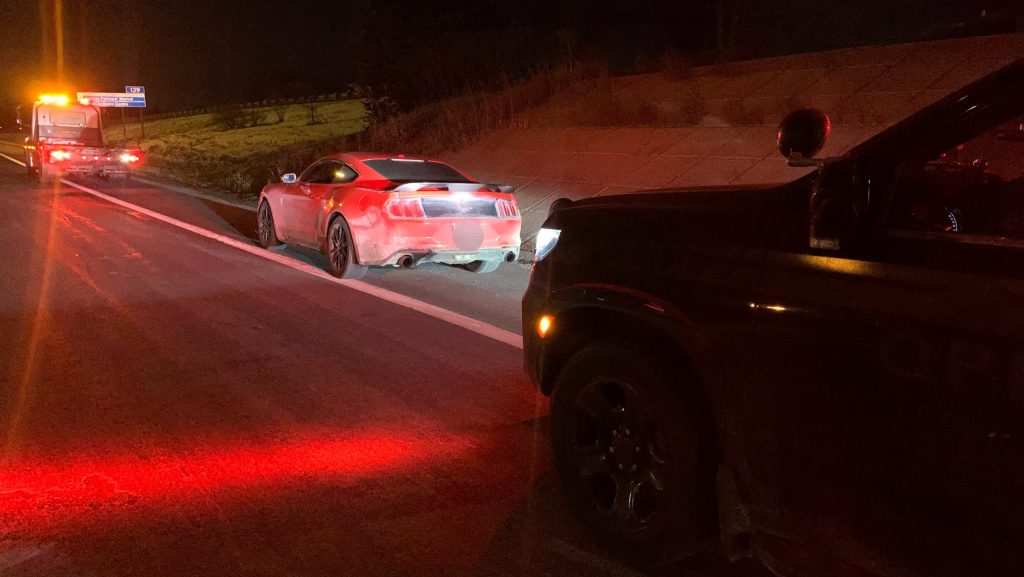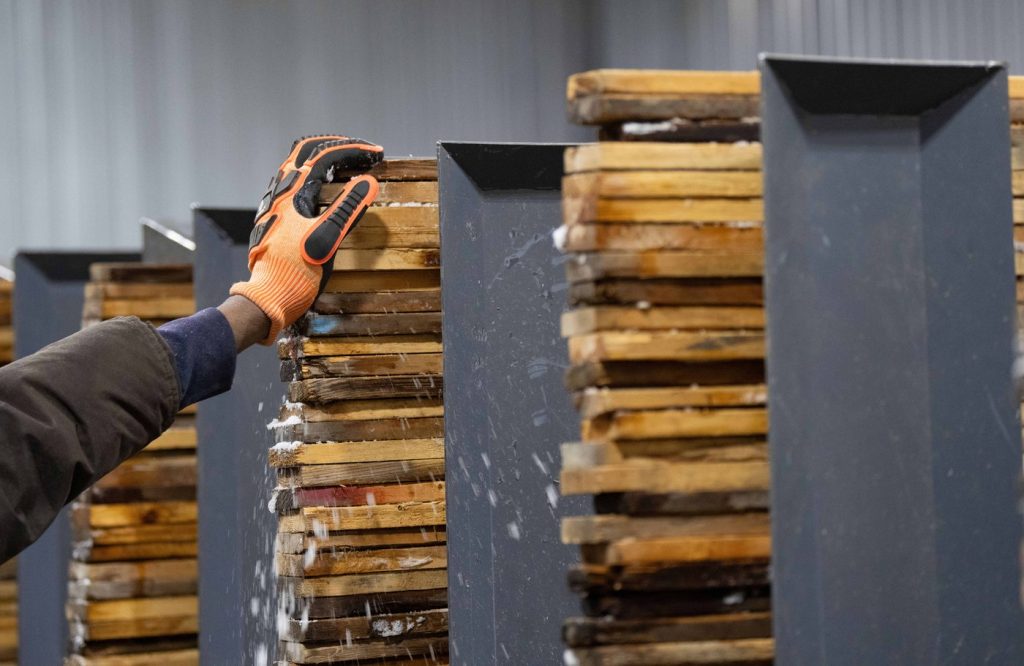Remember This? Stony Monday Riot
Posted Sep 17, 2018 02:12:00 PM.
This article is more than 5 years old.
OttawaMatters.com, in partnership with the Historical Society of Ottawa, brings you this weekly feature by Director James Powell, highlighting a moment in the city's history.
17 September 1849
We like to think of Canada as a peaceful nation, full of considerate, tolerant folk who respect authority, accept people's differences, and, generally, get along pretty well. In reality, we have had, and sadly continue to have, our share of ethnic, religious, and linguistic strife.
While we have been able to avoid bloody revolution or civil war, it was a close call on a couple of occasions.
We had a narrow escape in 1837-38, when rebellions broke out in both Lower and Upper Canada against repressive, corrupt, local oligarchies. A combination of military action by British soldiers and local militias, and subsequent enlightened political measures by leaders like Louis-Hippolyte Lafontaine and Robert Baldwin, diffused the situation, paving the way for responsible government, i.e. a government that reflects the will of an elected assembly rather a cabal of unelected, powerful individuals, or, as our American cousins might say, “a government by the people, for the people.”
We had another close call ten years later.
In 1849, an elected Reformist government in the Province of Canada passed a bill that financially compensated owners for property destroyed during the 1837-38 Rebellion in Lower Canada. The bill covered everybody except those who had been convicted of treason.
Conservatives, called Tories, were outraged that people who had opposed the Crown in the Rebellion would be eligible for compensation.
Despite his own misgivings and Tory pressure, the Governor General, Lord Elgin, signed the bill into law in April 1849, an act that underscored the newly established principle of responsible government. An enraged, largely Anglophone, Tory mob in Montreal, then the capital of Canada, pelted Elgin with eggs, and burnt the Canadian Parliament to the ground. With Montreal deemed unsafe, the search began for a new capital.
In 1849, Bytown, as Ottawa was then known, was little more than a village that had grown up around the Ottawa River end of the Rideau Canal. Like the country, it too was politically divided between Reformists and Tories.
Loosely speaking, for there were many exceptions, Lower Town residents, mostly working class, Roman Catholic, Francophone and Irish settlers, supported Reform, while the wealthier, largely English, Protestant elite of Upper Town favoured the Tories.
Against the backdrop of the troubles in Montreal, Reformist municipal leaders in Bytown called for a town meeting to be held on Monday, September 17, 1849 in the Market Square. On the agenda was the organization of an appropriate reception for Lord Elgin, who was expected to visit Bytown as he made his way on a tour of Upper Canada.
Leaders also proposed sending a letter to the Governor General to, among other things, express their respect for the Governor General as the Queen's representative, to place before him the town's “wants and wishes,” and to underscore the merits of Bytown as a “site for the future Capital of the Province.”
One might think that a vice-regal visit to Bytown would have had the support of Tory Loyalists, especially as they had a lot to gain from the town being selected as the new capital of Canada. However, bearing a grudge against the Governor General for signing the Rebellion Losses Bill into law, they were hotly opposed.
According to The Ottawa Advocate, a Tory newspaper, the proposed letter to Lord Elgin was inflammatory.
On the Sunday prior to the day of the meeting, Tory supporters, “fully armed and equipped,” began to pour into Bytown from surrounding farming communities, including Nepean, Gloucester, Fitzroy, and North Gower. Their intent was to suppress the meeting.
According to The Packet, the main body, roughly 500 men, had arrived by wagon by mid-morning, and were met by Bytown's Tory leaders, one of whom was the mayor, Robert Hervey.
At 1:30 p.m., they marched to the site of the meeting only to be confronted by an equally large crowd of Reform supporters. Initially, there was no trouble, but as Edward Mallock, the MP for the county, and Reformist leaders, Charles Sparrow and Joseph-Balsora Turgeon (both later mayors of Bytown), rose to speak from a platform erected at the south end of the Market Square facing York Street, they were shouted down by the Tory mob.
Within minutes, a bloody brawl broke out. Sticks and stones were liberally employed, giving rise to the day's name “Stony Monday.”
When a shot rang out, there was a “general run for firearms,” with up to fifty shots fired. More than two dozen men were wounded. Many fled to the nearby Shouldice Hotel (now the location of a Starbucks at 62 York Street) for safety.
Although the newspaper reported that there had been no deaths, a Methodist bystander, David Borthwick, was fatally shot in the chest.
Within twenty minutes of the start of the riot, the Canadian Rifles were mobilized under the direction of Mayor Hervey.
After marching through Lower Town arresting Reformists, the soldiers took control of the Market Square. There, Tory supporters passed their own resolution to write a letter to the Governor General expressing their “unqualified disapprobation of the unprecedented course pursued by Your Excellency's present advisers, whose whole system of policy in the Administration of public affairs in this Colony, from the day of their assumption of power to the present time, [they] must unhesitatingly and emphatically condemn.”
The draft letter was read out loud by Hervey.
According to The Packet, a Reform organ, the Tory letter to Lord Elgin was “steeped in the blood of fellow-citizens, and adopted at a moment when their hired bullies were butchering the peaceable Inhabitants (Reformers).”
After a series of “violent speeches,” Mayor Hervey swore in special constables who, at the head of the mob, paraded through the streets. The mayor urged fellow Tories to reassemble two days hence, on the Wednesday, and to come “fully equipped for war.”
The purpose of this assembly is unclear.
The next day, Tuesday, was fairly quiet, with both sides preparing for battle.
Early on Wednesday, Reformers from near and far poured into Lower Town, while Tory farmers from neighbouring farming communities returned to reinforce their Upper Town allies. The Packet described both sides as being “completely armed as if the Country were in a state of civil war.”
Tory supporters mustered on the brow of what is now Parliament Hill overlooking the canal. After being addressed by their leaders, including Mayor Hervey, the mob moved eastward down Wellington Street. Meanwhile, the Reformists, who had formed up in the Market Square, moved to intercept the Tories. The two groups, of roughly equal size, totalled at least 1,000 men.
At 2 p.m., armed with rifles and bayonets, and apparently cannon, they came face to face on Sappers' Bridge, the only crossing over the Rideau Canal linking Upper and Lower Towns. Fortunately, a small contingent of brave soldiers, this time acting in an impartial fashion, interposed themselves on the bridge between the two hostile parties.
The situation grew tense.
A Tory “proposition” to charge the troops went unanswered. Already taut nerves were rattled when Reformists fired a volley of shots into the air, reportedly to empty their guns as a prelude to leaving.
After a face-off lasting two strained hours, Tory supporters, under a “Party Flag,” marched away to a tune played on a fife and drum. A parting volley of shots was fired into the air. With the Reformists also standing down, the troops returned to their barracks.
The Packet opined that if it wasn't for a number of fortunate occurrences, most importantly the timely intercession of the troops, “one of the bloodiest tragedies on record would for ever hereafter have blacken the character of this fair Town, and made it unfit as a residence for any man but him unfit for civilized society.”
The newspaper marvelled in despair saying that a “stranger may well ask, 'Can it be true? Can such a scene have occurred in the middle of the 19th century in enlightened Canada?'”
The answer was a disturbing yes.
The drama was not quite over.
Men arrested by the troops the previous Monday appeared in court on Thursday. With a large crowd outside, their cases were adjourned.
Meanwhile, troops seized a private arsenal of arms, including cannon, from a property owned by Ruggles Wright, Senior, on the Hull side of the Union Suspension Bridge. The soldiers arrested Wright, along with Joshua Wright, Ruggles Wright, Junior, and Andrew Leamy.
After being detained at the guard-house, the men were released on bail.
The soldiers also temporarily detained Henry Friel, editor of The Packet; Friel later became mayor of Bytown and Ottawa.
In the end, most of those charged in the affray were acquitted due to lack of evidence. Nobody was ever charged with the death of poor David Borthwick.
In 1853, Lord Elgin was courteously and enthusiastically welcomed to Bytown, which Queen Victoria selected as the new capital of Canada in 1857.
Robert Hervey, the mayor who had led the Tory assault on the Reformers, left Canada in 1852 for Chicago where he became a prominent lawyer.








